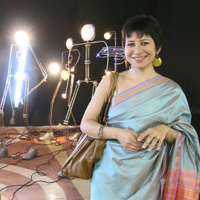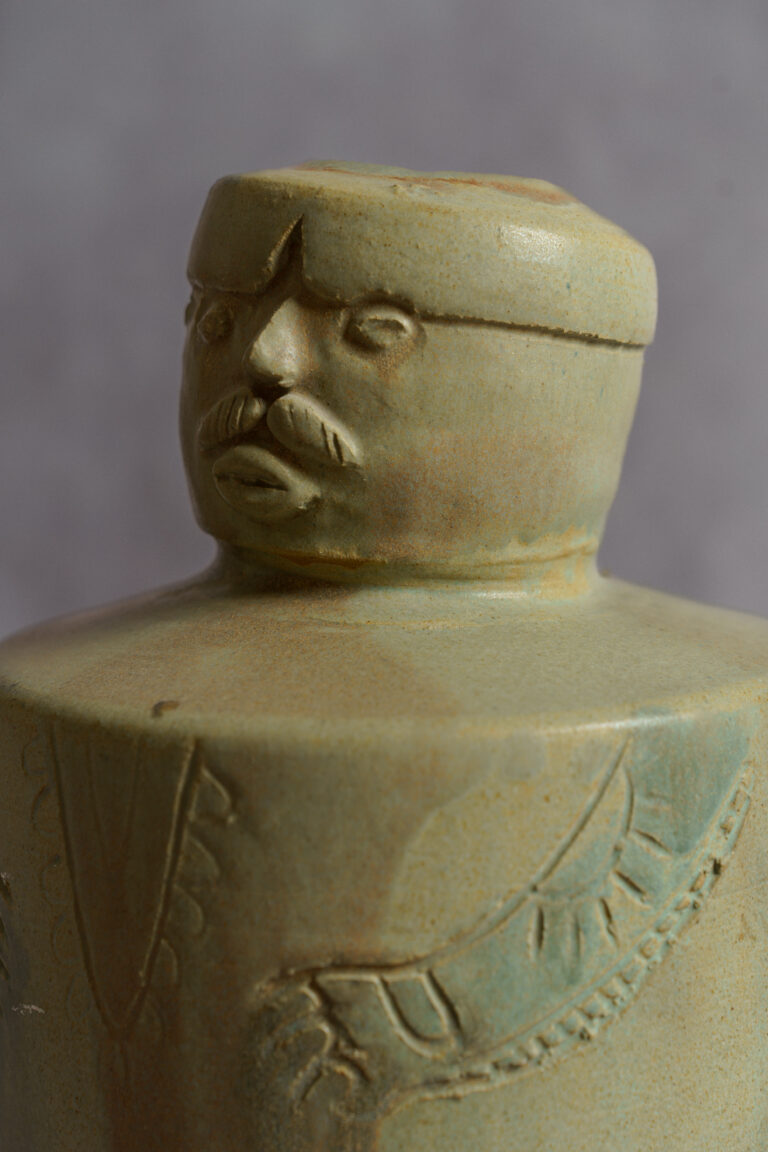The Americans is a series of photographs of the Indian community in North America that Gauri Gill began in 2000 and completed in 2007, five years after her graduate years at Stanford University. The work that began as a portrait of her family in 1993-94 later grew into an investigation into a community that was seldom represented in the museums and galleries of the continent.

The title of the series, alluding to Robert Frank’s book of photographs published in 1958, makes a reference to the desire to write the diversity of persons that constitute the category of ‘Americans’ into contemporary North American cultural landscape. But here it is important to point out that the Indian Diaspora, which is in itself a multilingual-multicultural community, does not form a single story of identity and belonging or marginalization. In Yuba City an elderly turbaned gentleman has just cycled past election posters that represent the racial diversity of the city, one of the earliest sites of Indian settlements, and the confidence of this community to seek participation in governance, not hide in ghettos shut away from public eye and office. We are shown the factory Worker at Sunsweet Prune Packing Factory, Yuba City and the professionals Alok and Sumati Patel Parekh, Silicon Valley, California. We are shown young men dressed to perform the bhangra on the left and hip hop on the right in Stanford University Bhangra Competition, Dianza College, California 2002/Performers Kwane Wilkinson and Shane ‘Shake’ Dhillon from the California Soul Hip Hop Dance Academy based in Modesto, California. Shane ‘Shake’ Dhillon is Sikh but in adopting a hip-hop middle name he has formalized his multiple identity.

Diptychs are a useful device to write discursive disharmony into a work for a series, which by its very repetitiveness can forefront certain themes and readings over others. With a series such as this one of giving faces to communities we must be wary of making essentialized assumptions about what The Americans represents, whose subject is the Indian Diaspora but that shies away from fore-fronting any tropes about this identifiable category. Gauri also makes the locations of her photographs ambiguous, the Sikh gentleman may well be crossing an intersection in Chandigarh as much as in Yuba City, Gauri creates difficulties about thinking along the lines of assimilation or ghettoization.

I have written to some extent of what Gauri does not want from this series. She has concurred with Christopher Pinney’s comment that, where the work arose from a desire to record a community that is part of the South Asian Diaspora but also American, it also wanted to ‘mount a critique from within against religious orthodoxy, patriarchy, routinised actions of diasporic nostalgia…’1
Thus it is as much critical as it may be seen to be celebratory of a community, and this dualism allows us multiple ways to access and assess the photographs. The work attempts to guard itself against becoming a racial imaginary and it is in this sense that we would be doing the series a disservice if we think of it only in terms of identity. The Americans defies the logic of oneness in its titling, in its seriality and its intention.


The series is useful, for me, to think through the role of the photographer in an instance such as this. It is apparent that Gauri’s is a sympathetic gaze and in some ways perhaps a comforting one for the subjects in the photographs. Thus she is not only allowed to witness the familial joy of the inter-racial family of Rajesh and Donnie Speer. Sylacauga, Alabama but is also able to minimize her presence as recorder thus allowing the moment to seem spontaneous rather than staged. Many of the moments seem arbitrary and fall within a snapshot aesthetic, both seeking the candid moment and paying homage to the everyday. This may also be because Gauri did not begin with the intention of creating this particular series which grew and changed over the years and finally took shape on the editing table, which is also when the work was titled. She began by photographing family and friends and it is from this that the series grew but by the time of is consciousness Gauri had already embodied the work and its subjects, thus the sense of easy familiarity with the scenes on view. Thus the viewer does not inhabit the gaze at the ‘other’, which is self-aware and may be employed even when looking at ‘oneself’. If it is an exercise it is one of mapping the difficulties of nomenclature.















